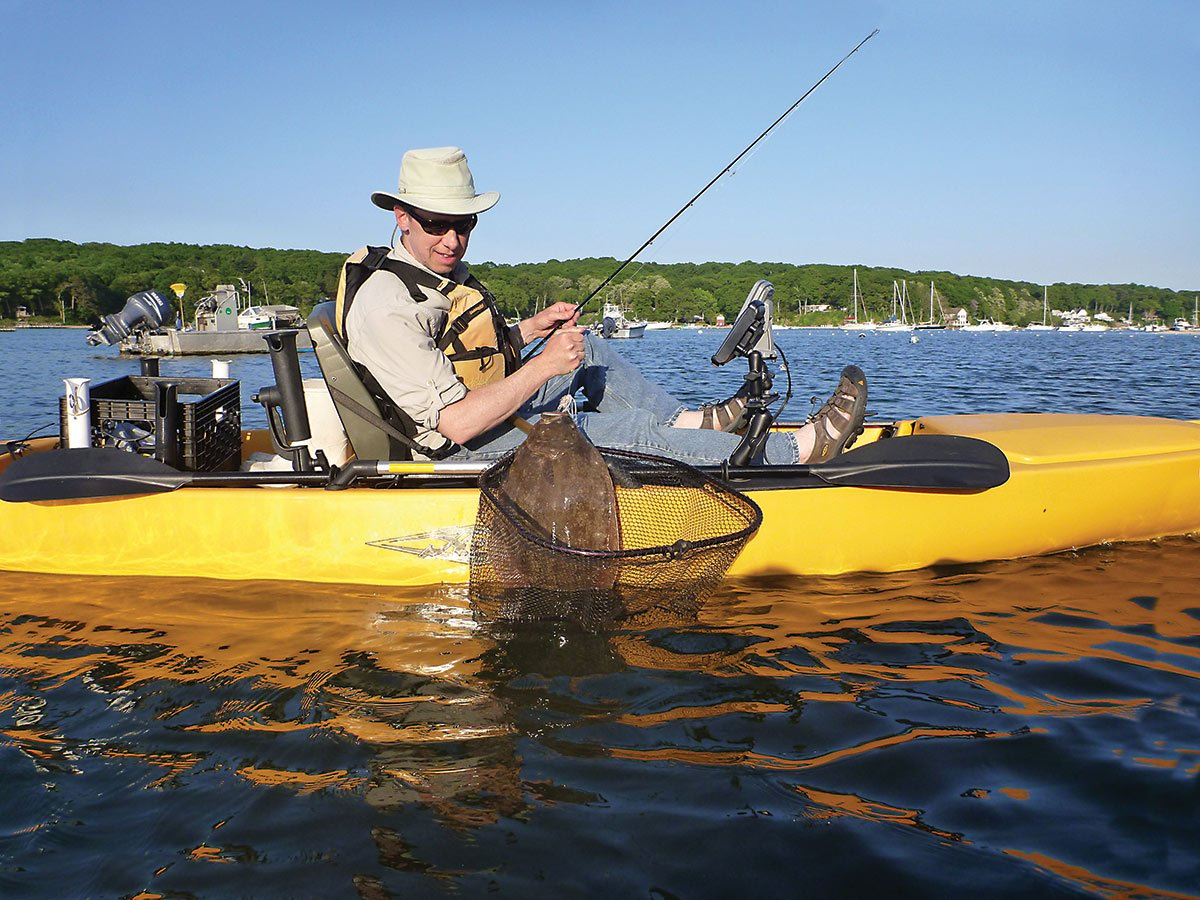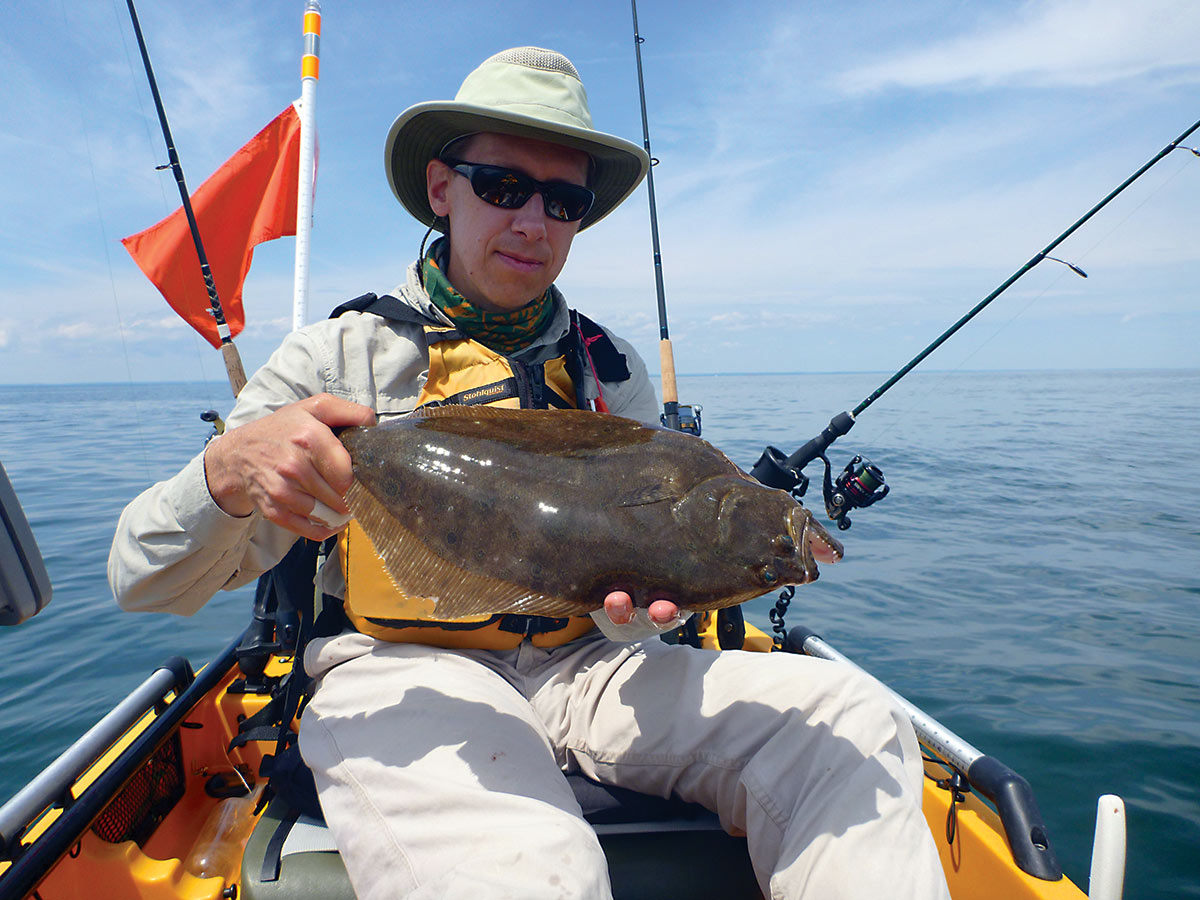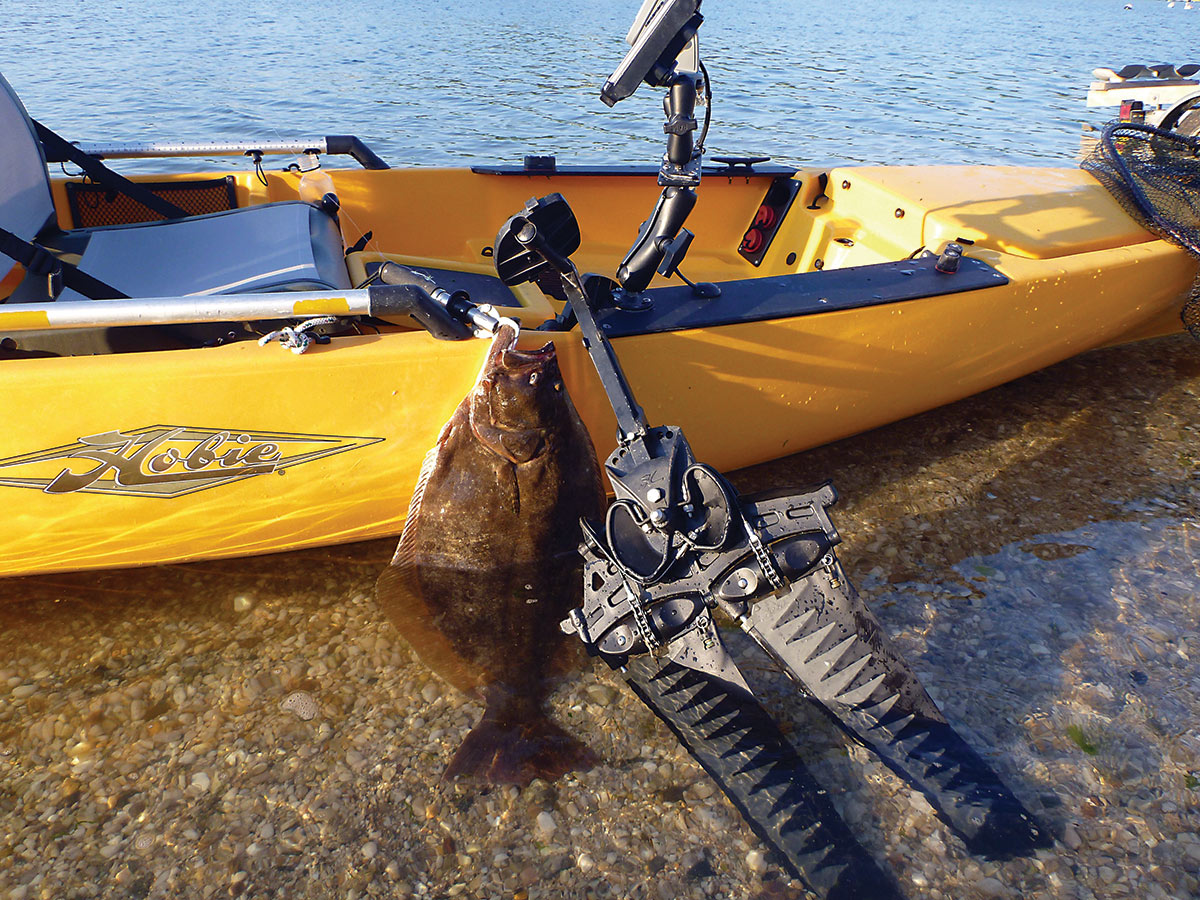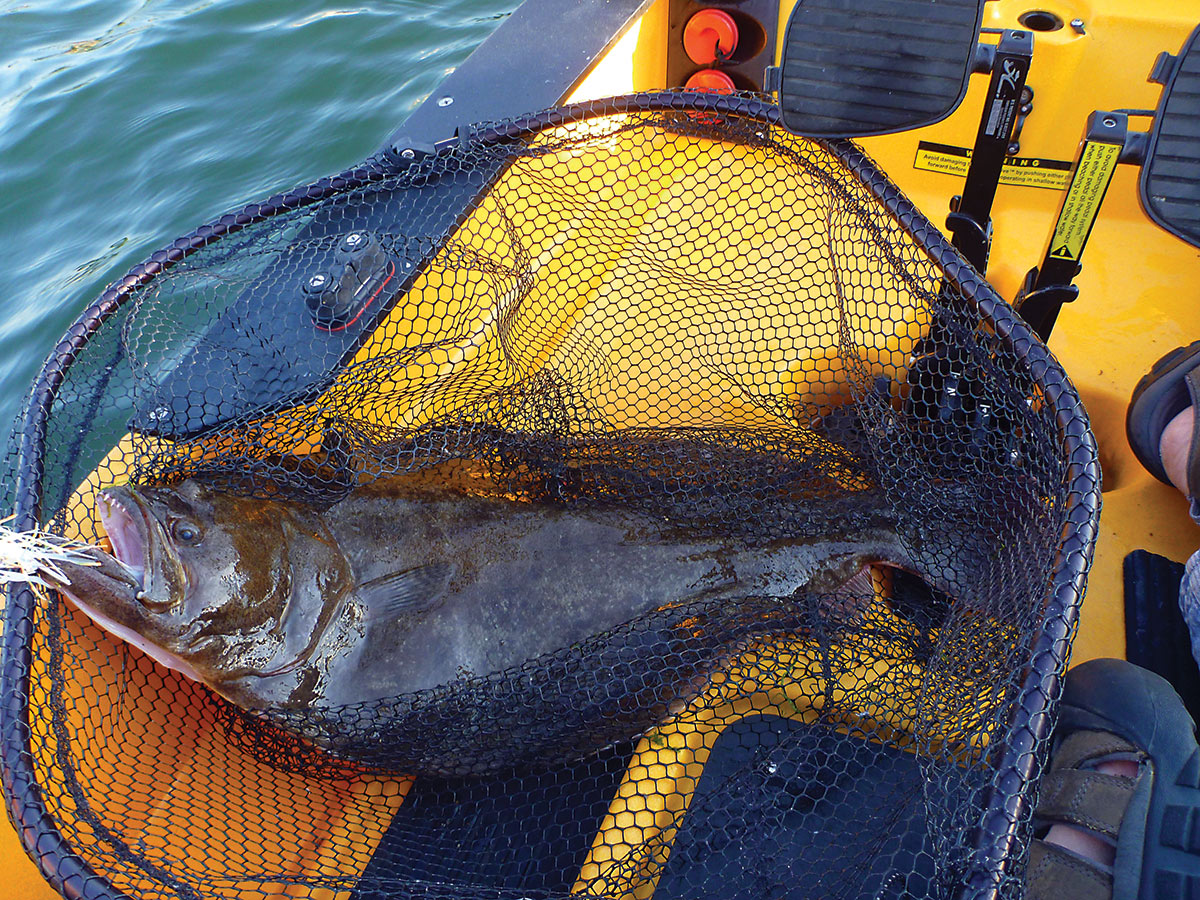
Hobie’s Mirage Drive System elevates fluke fishing from a kayak to another level.
One of the fish most commonly sought after by kayak anglers is fluke, yet I find fluke are one of the more challenging fish to successfully target from a yak. Sure, one can drift around aimlessly and snag a fish here and a fish there, but finding consistent success can require considerably more effort.
My first ever yak fishing experience was a fluking trip. The feeling I remember best from that day is one of frustration. I was fishing a narrow harbor with lots of mooring buoys on a breezy day. Having to repeatedly pick up my rod to fish and then put it down to paddle away from and around the moored boats and other hazards was quite a challenge.
A move to outside the harbor presented other difficulties. My drift was too fast, and I was more at the mercy of the wind than of the tide. My course while drifting was erratic, and again required me to frequently put down my rod and pick up my paddle to adjust my track. Why then, do I now fluke fish mainly from a kayak? It’s because I discovered the advantages of using pedals over paddles; specifically aboard my Hobie Mirage Drive kayak.
Hands Free
The patented Mirage Drive is a removable unit that fits into a large scupper hole in front of the seat. Pedaling the drive with a forward and backwards motion activates two fins located in the lower part of the unit under the water line. As the fins move back and forth they flex into a shape resembling a propeller blade, or, as some have said, a penguin’s fin. This provides the propulsion that moves the boat forward. Steering is accomplished by fingertip control of a small lever that can be mounted either port or starboard. The newest version of the drive, dubbed the Mirage Drive 180, boasts a reverse feature, allowing for even greater maneuverability and versatility.
Hobie kayaks featuring their Mirage Drive allow hands-free propulsion and maneuverability, which is a great asset for fluking. The most obvious advantage here is the ease at which you can reach your fishing destination and then return for multiple drifts without having to manage both your rod and a paddle, but over the last several years I’ve refined some specific techniques that have helped me to improve my catches and at the same time reduced the amount of effort required to do so.

When I go fluke fishing I nearly always start with a plan of action. Unless I haven’t fished an area in a long time or I’m scouting out a new area, I tend to start out by fishing where I’ve caught fluke in past seasons. Fluke hold in very specific spots year after year. When I say spots in this case, I’m talking about an area measured in dozens of feet at the most. When drifting for fluke, I create a GPS mark each time I hook a fish. Over time, this has allowed me to create a map with clustered data points revealing where the fluke tend to concentrate. I can then target those specific marks in subsequent years.
During my drifts, I use the Mirage Drive to adjust my heading frequently, so as to pass over as many of my previous marks as possible. This strategy helps to put many more fish in the boat than I would normally catch by drifting blindly through a general area. This kind of frequent course adjusting can be done with a paddle kayak, only with considerably greater effort.
Bar-hugging
When fishing back-bay areas, I often find fluke holding tight to steep drop-offs along channel edges and bars at the harbor mouths. Usually there is a specific depth range where the greatest concentration of fluke hold. Sometimes this sweet spot is barely a few rod-lengths from the shore. To fish such spots in a powerboat one risks running aground, and if fishing from a traditional kayak it can be tricky to follow a course along the depth contours and stay within the target depth range where the fluke are holding. This technique can be tricky, as it requires paying simultaneous attention to your sonar screen, speed, and course, but it can produce results that make it worth the effort.

Many kayak anglers are familiar with using a drift anchor to slow one’s drift on windy days. I keep one on my yak at all times and regularly employ it during the season when fishing on open water. But when fishing in harbors and bays or when taking short drifts for fish concentrated in a small area, having to deploy, pull, and re-deploy the anchor repeatedly can become quite a chore. Kayak anglers fishing a pedal-drive have another option at their disposal; with the Mirage Drive it’s possible to point your bow into the wind and gently pedal just enough to slow your progress as you drift backwards.
I always have my GPS running while I drift, so at a glance I can check that I’m moving along at my target speed of about 0.5-1.0 mph. This maneuver can be tricky to execute, especially if the wind direction is variable, but I can remember a few instances where the technique saved the day. Those using the Mirage Drive 180 have an added advantage as they can switch their drive unit into reverse and don’t even have to drift backwards.
Overcoming Obstacles
At the tail end of the season, fluke often filter back into harbors to pursue abundant baitfish such as spearing, anchovies and snappers. In some coastal locations in the region, you may have the benefit of harbors with moored boats, which is where many of these baitfish find shelter. I’ve found that fluke often hang around those boats to ambush prey.

This is close fishing, requiring precision maneuverability while the line is in the water, all the while being mindful of avoiding getting snagged on a mooring chain. What would be very difficult with a traditional paddle kayak becomes quite easy and fun with the mirage drive. In late August into September I regularly pull keepers while doing circles around those moorings.
Of course, it’s during dead calm days with little current that Mirage Drive kayaks really shine. In my opinion there is no better craft to use for fluking under such conditions, for this allows one to power drift. Power drifting is a misleading term; it’s actually just very slow trolling. It’s a deadly technique to use for fluke when there are no natural forces volunteering to move your boat.
I recall a few days out fishing amongst the powerboat fleet when those around me were hardly moving, and hardly catching, while I leisurely pedaled along at half a knot and cleaned up on the flatties. If you find a concentration of fluke and the tide happens to be slack you can even fish in circles around them. The fluke don’t care if you’re going straight or not. As long as the bait is moving they’ll be interested in your offering.
The Mirage Drive offers utility and versatility that simply can’t be matched by standard paddle kayaks, and there is no other kind of angling for which the Mirage Drive is better suited than fluking. Though Hobies are quite pricey as kayaks go, I can’t think of a single ‘yak angler I’ve ever known who has tried one and then gone back to using a traditional kayak.
Most, if not all Hobie dealers allow test drives of the models they sell, so you can see for yourself the difference hands-free propulsion makes.


